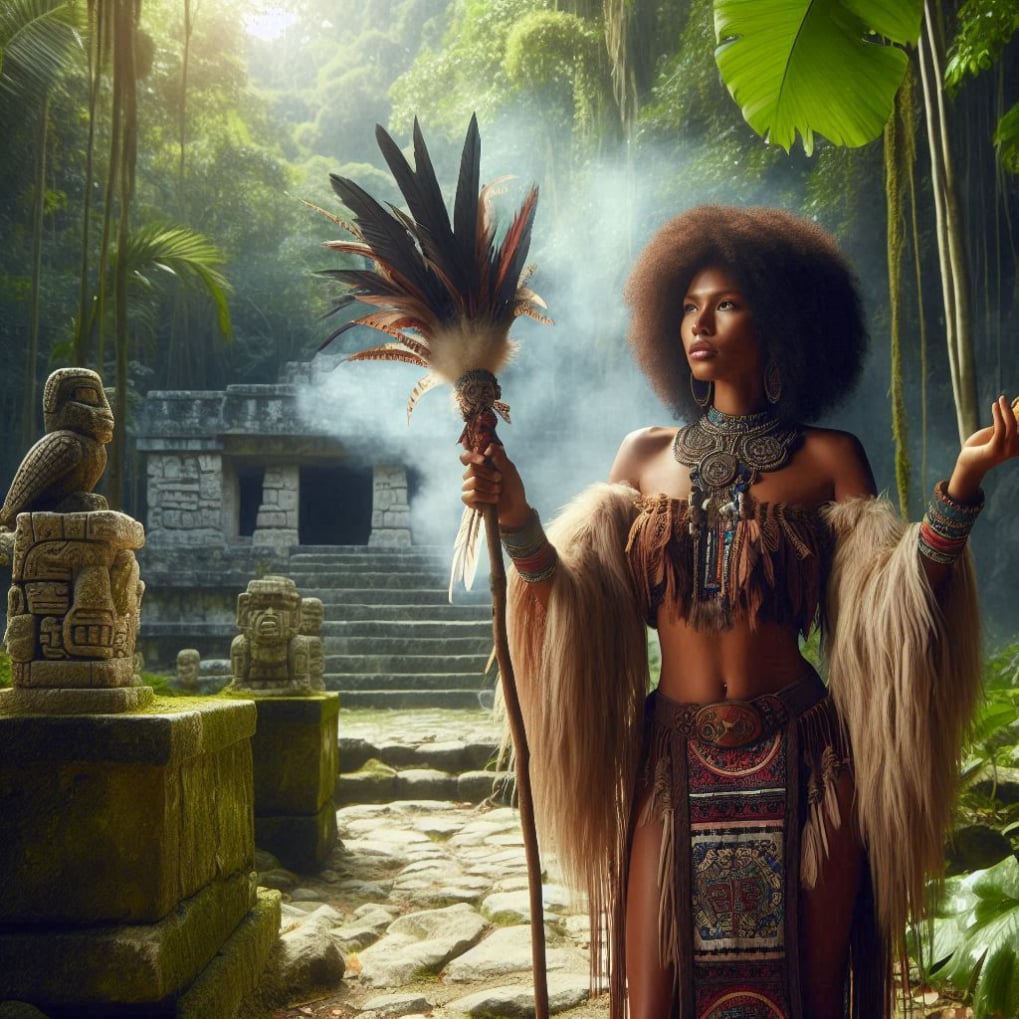Mayan Religions, Rituals and Gods
I. Overview of Maya Religions
The Mayan civilization is considered one of the most complex and advanced civilizations of Mesoamerica. Mayan religions include a polytheistic pantheon and a complex belief system full of rituals. At the center of Maya religion lies a deep understanding of nature, time and cosmic forces.
II. Maya Gods and Goddesses
1. Itzamnah
- Description: Itzamnah is considered the chief deity of the Mayan pantheon and is usually the god of creativity, the sky and wisdom.
- Representation: He is usually depicted as an old man and is thought to possess great knowledge. He is also believed to have a dual nature; he is a figure of both good and evil.
2. Kukulkan (Quetzalcoatl)
- Description: Kukulkan, also known as the “feather serpent”, is an important deity in the Mayan pantheon. He is also associated with felege, weather and storms.
- Representation: He is depicted as a large feather serpent and symbolizes the connection between the sky and the earth. Kukulkan plays an important role in Maya cosmology.
3. Chaac
- Description: Chaac, the god of rain and storms, is a figure associated with agriculture and natural phenomena. For an agrarian society, the provision of rain and thus productivity is critical.
- Representation: He is usually depicted with an axe and is often shown with motifs symbolizing clouds and rain.
4. Ix Chel
- Description: Ix Chel is the goddess of the moon and fertility. She is associated with women's health, childbirth and the afterlife.
- Representation: She is usually depicted as an old woman and is represented by symbols related to the moon. She is also considered to have medical knowledge.
5. Ah Puch
- Description: Ah Puch is the god of death and the underworld. He is usually depicted as a frightening and deadly figure.
- Representation: He is usually depicted as a skeleton or a decomposed body and is associated with darkness and death.
III. Mayan Rituals and Methods of Worship
1. Bloody Sacrifice Ceremonies
- Definition: In Mayan religious rituals, bloody sacrifices were made to show devotion to the gods and nature spirits. The purpose of these rituals was to please the gods and maintain cosmic balance.
- Ritual: Usually involved self-mutilation, blood sacrifices and sometimes human sacrifices. Blood was seen as a gift to the gods and was considered a sign of seriousness and devotion to the gods.
2. Temple and Pyramid Ceremonies
- Description: Maya temples and pyramids were sacred spaces used to worship the gods. These structures often incorporated cosmic and astronomical alignments and would have been a central part of rituals.
- Ritual: Ceremonies in temples were organized according to the positions of the stars and planets. Rituals included dances, music and bloody sacrifices.
3. Astronomical observations and calendars
- Description: The Maya associated astronomical events and calendar systems with their religion. The movements of the sun, moon and planets were an important guide for rituals and religious ceremonies.
- Ritual: Important astronomical events, especially solar eclipses and planetary transits, were celebrated with religious ceremonies. Mayan calendars tracked these events and determined the timing of rituals.
4. Shamanic Ceremonies and Spiritual Communication
- Definition: Shamans performed various rituals to communicate with nature spirits and gods. These ceremonies were intended for spiritual guidance and to establish a connection with the other world.
- Ritual: Shamans would enter a trance state, often using psychoactive plants and dances. It was believed that spiritual knowledge and messages from the gods were received during this process.
5. Death and Otherworldly Beliefs
- Description: The Maya had an important view of life after death. Death was seen as a process of reuniting with the gods and finding a place in the afterlife.
- Ritual: Death ceremonies included a variety of rituals to comfort the soul of the deceased and to ensure its passage to the afterlife. The dead were usually buried with various gifts and objects.
IV. The End of the Maya Religions
Mayan religions largely disappeared after the Spanish conquest. The influence of Christian missionaries and the processes of colonization have drastically changed the religious and cultural heritage of the Maya.
However, some Mayan traditions and rituals continue to live on in various forms in local communities and among the people.
Maya religions are characterized by their polytheistic pantheon, complex rituals and deep connections with nature. Mayan society placed their religious beliefs at the center of their daily lives and social structures.
Although these beliefs largely disappeared after the Spanish conquest, the Mayan cult and its religious heritage are still present in modern communities. The complex religious structures and rituals of the Maya are an important subject of research in history and archaeology.

